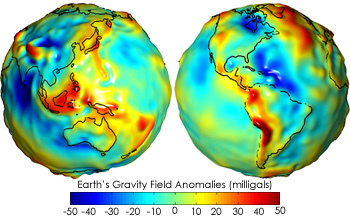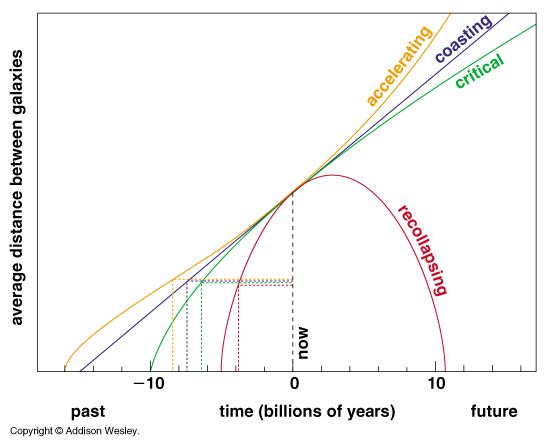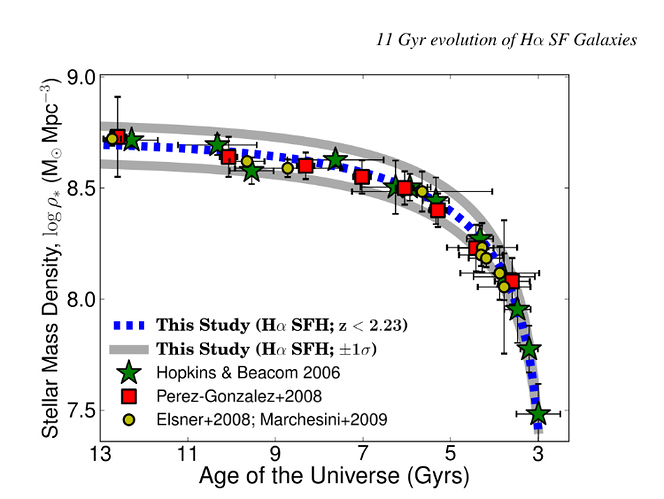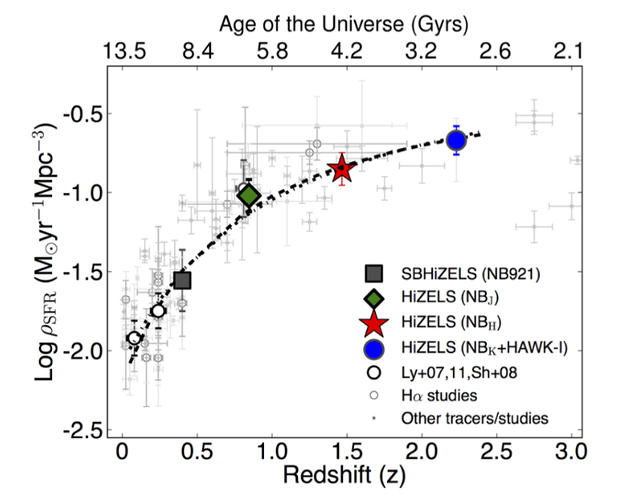Probably because it has never occurred to anyone that someone would need to be persuaded of this. I just finished discussing the most fundamental units of physics with my high school class, and the three main ones that most come up early in first semester physics are meters, seconds, and kilograms … measuring space, time, and matter. It’s hard (impossible?) to get more physical than this. Which is not to say that we understand what more fundamentally may be behind the physicality of something … as opposed to its … non-physicality? It is only to say that our science is starting here with these measurable things that we can all make practical use of. If these are not physical (in the common essence of them that we can conceive of anyway), then the word “physical” must not mean anything.
I would respectfully disagree. The word physical refers to matter/energy. Measurement refers to knowledge which is not physical. This is the basis of Western dualism, the physical and the metaphysical, body and mind.
The problem today is that many like @T_aquaticus reject the concept of metaphysical and want everything to be physical. Science needs the rational to understand the physical., so that does not work.
My position is that everyday Reality is composed of the physical, the rational, and the spiritual which gives the whole purpose and meaning.
Those are interesting thoughts, Roger. And I like your final formulation … the “trinity” of the physical, the rational, and the spiritual all existing together.
While I am forced to defer to physicists present who are much more credentialed in that area than I am, my basic understandings of it involve measurable units of both space and time (meters and seconds respectively). Our notion of energy (to my knowledge) cannot be discussed apart from both space and time --the basic unit being a Joule which is expressed in terms of kg*m^2 / s^2 So it seems nonsensical (dare I say irrational?) to try to think that energy can be separated from our notions of space or time. It is in those contexts that energy as we know it exists. Of the meter, the kilogram, and the second it seems very curious to me that you want to single out the kilogram as being uniquely physical, and distinct from the others in that regard. I’m hardly in a position to argue that you’re wrong to think so. But I’m also suspicious that the physicality of any of those fundamental units probably rises or falls together. Time does seem more mysterious, abstract, and less manipulable than a “plain old” kilogram of matter that we can hold in our hands. But I think our presumed familiarity with the latter has probably been shown to be misleading ever since Einstein showed the intimate connection between all three: matter, time, and space.
There are two interesting predictions that modern cosmology makes about the future of this universe (bearing a supernatural intervention)- one is that knowledge will begin to decrease and the other is that time will effectively stop.
Knowledge will begin to decrease as we will just simply not be able to store it as a process that ultimately depends on heat transfer. At some point thermodynamic processes will begin to slow down and eventually heat transfer will cease. At this point, the flow of time will also cease as the direction of time as we know it is based upon the second law of thermodynamics. The future of the universe will always look the same and should one observe it, there would effectively be no more time.
In other words, I’m describing knowledge and time as dependent on physical conditions and when the physical properties go away, so do knowledge and time and hence I argue that one cannot make a case they are anything more than physical.
In other words you are predicting a situation that is the exact opposite of what I said happened in the Beginning, which you refused to accept. Just as the universe came into existence out of nothing. no time, no matter, no energy, and no space, then the universe will cease to exist in the same way.
I would expect that just as humans did not come into existence until long after the universe began, so we and our “knowledge” will physically disappear long before the universe.
You make the mistake of thinking that just because the universe is in part physical, that it is completely physical. Humans are in part physical, but we are also rational and spiritual beings. That is why we are able to live with God after we die physically. Mass and energy are interdependent as per E = mc squared, but that does mean matter is energy or energy is matter. They are interdependent, and can be transformed into each other, but not the same.
You are right. A kilogram in earth’s gravity is different from a kilogram in our moon’s gravity. So weight is relative also.
Heat transfer is a function of temperature difference. So dQ/dt asymptotically approaches zero without ever quite reaching it, right? On the other hand I guess that mathematical ideal would eventually be buried underneath the noise of the last particles themselves settling into their eternal temperature equilibrium. Still … it’s interesting that you say time would have stopped at that point. There would still have been a past that was different than the future, and that past would still have existed even if physical beings were no longer there to speak of it, right?
Weight is relative in that sense, but mass is not. 1 kg remains 1 kg on either moon or earth. But in the relativistic sense, you are correct – mass is relative to relative speed. On the other hand … there is the rest mass. I’m not sure how that would be relative to anything.
According to Einstein time and space are relative – depending on the masses present, no less.
I’ve got a question about this.
Our existing models of star and solar system formation involve clouds of dust gravitationally coalescing into all the respective bodies that make up those systems. It’s easy enough to imagine that slightly higher density “clumps” in an otherwise well-dispersed cloud would begin to attract more and more of that surrounding cloud … compressing it (thus heating it up as well), and viola! Your gas giant or maybe even star is born.
So why does this same process not just continue – preventing any perfectly uniform heat death? It seems to me that no uniformity (especially considering that gritty quantum messiness down at the atomic level) could be so perfect as to prevent some tiny clump from beginning to gather its gravitational steam, no matter how long it takes. Cosmologists look for those non-uniformities in past distributions to explain current clusters or distributions as I understand it. So we have no lack of non-uniformity now. If the second-law carries such power as to reduce all this present non-uniformity down to a perfectly uniform soup in the future, then how come that same mechanism didn’t stymie the widely dispersed dust clouds back then, thus preventing our current state of the universe?
Good points. Like every time two galaxies collide you get lots of new Star formation! Here’s a short list of 100 or so galaxies that will merge:
http://iopscience.iop.org/article/10.1088/0067-0049/181/1/233/pdf
We have about 10^21 stars in the universe, with at least the same to come. We will certainly have new stars for trillions of years!
What some groups have done is estimate the Star density and over time (ie if you just catalog what you find a what redshift you can get a.m. the whole family photo album) and there was a peak about 11 billion years ago which had been declining since then. Keep in mind there still will be billions of trillions of new stars but the rate appears to be decreasing from what we can observe, ie a figure like this:
Note this is not just an artifact of the expansion of the universe (but that would impact it to some degree). However, with the expansion of the universe, eventually space will be so stretched that basic chemical reactions can no longer occur and gravity cannot collect matter (as in is already occurring to some degree- gravitational waves travel at the speed of light and if space itself is moving away faster than the speed of light gravity can no longer function). But of course, if we start to collapse then all this is off the table and the universe ends in a glorious fireball much the same way it began.
I guess the “inflation of space” puts it back on the table for me, to the extent that such an answer counts as intuitive.
If I read your chart correctly, is that indicating that there are now about 10^ ~8.7 mean solar masses per cubic megaparsec in our entire universe? Our galaxy by itself would be a tiny fraction of a single cubic megaparsec, so that number is interesting to me (and surprisingly high perhaps.)
But on the other hand, I must be missing something, because the chart shows a younger universe having less stellar density. Isn’t our stellar density decreasing rather than increasing —with space getting bigger, and our Hubble rush to get away from each other and all? Or are stars being born at such a rate as to be increasing that average stellar density?
And finally … I thought we hadn’t yet definitively found anything we could call the “edge of the universe”? So what volume do they speculatively stick in there for these average density calculations anyway? I mean; measuring the stellar density of our own corner in the cosmic neighborhood is one thing, but extrapolating that out to … ? … is quite another.
Rest mass is relative to its environment. Since nothing is really not moving, since the universe is expanding, nothing is really at rest.
I still so not think that you point that a mass that weighs 1 kg in the earth’s gravity weighs the same in our moon’s gravity. Also I think that it would slightly different below sea level at the Dead Sea then on top of Mt. Everest.
Yes – but the quantity of mass present hits its lowest point when you are at rest relative to it; which gives that (rest mass) quantity a kind of “absolutish” feel.
You are correct that 1 kg weighs different things at different places (this is well within my high-school level expertise!) But its mass is the same in all those places (tiny relativistic effects aside.) I.e. 1 kg weighs about 2.2 lbs (force or weight) on earth, and about a sixth of that on the moon’s surface. But it is the same amount of mass both places. Mass is constant in that regard.
[your last response had some confused wording, but it sounds like you might be confusing mass with weight. Mass is the amount of matter in something (measured in kg). Weight is the gravitational force applied to that mass (measured in Newtons or lbs). So the exact same mass can have many different weights depending on which gravitational environment it is in. If your weight was 150 lbs on earth, it would be about 25 lbs on the moon. But that doesn’t mean there is less of you while you are standing on the moon! You still have the same mass.]
The graph I posted just shows that the rate has been slowing down as you know starting to the 3 billion years after the universe began the rate begin increasing intensely and then it slowed down a lot such that. In fact, the actual rate is probably just easier seen by another graph from the same paper:
Presumably going from -1 to -2 would increase indicate a 10-fold decrease given the log base scale. So the rate per year per megaparsec cubed is decreasing substantially and will eventually reach zero. Still tons of stars are being made if our density has just stayed the same in total. The expansion of the universe only became the dominant factor about 4 billion years ago and its effects are still minimal compared to gravity’s handiwork. (Ie see this graph):
I’ll post more later as I’m now at a church picnic!
I added edits to my response above, but I’ll respond to this yet too.
Earth’s gravity does vary in very messy ways that intrude on our high school physics “perfectly uniform sphere” (or even just ‘point-source’ rather). The spinning helps decrease it at the equator. But altitude differences add more miniscule changes in there too (small as in less than 0.3% difference between Everest height and sea-level – not to mention the oblate ellipsoid shape of the planet), but then the even more messy non-uniformities creep in to really mess it up as the actual color-coded measurements show below. Rock is denser than water, so thicker continental crust areas (note the Andes) have higher gravity despite their higher elevation and proximity to the equator.
So all this is to say that yes, there is gravitational variation everywhere. But you’re going to need scientific instruments to notice any of it. Our straight-forward math is pretty safe and our 10 m/s^2 back-of-the-envelope estimates (who wants 9.8? – maybe Indiana can work up some legislation on this?) are pretty good as such things go.

So on the red-shift chart above (if I read it correctly), it means that while universe density is still decreasing, its rate of decrease is slowing down, right? But if so, wouldn’t that mean we were still in a gravity dominated era? Your latest chart above seems to show that we should be in a ‘dark-energy’ dominated era right now. Shouldn’t that increase our rate of density loss, thus beginning to reverse that curve’s direction? You said that curve is headed for zero. If true, that means our expansion eventually halts, right? I thought dark energy had us flying apart forever - and even accelerating as we go (which would accelerate our density loss).
There’s probably a lot I’m missing here.
You can lead a horse to water . . .
The density of stars is still going up, but much more slowly as the rate of new stars is slowing down. Keep in mind while super large stars might only last for a million years, many stars will last for billions to trillions of years (our sun is middle aged). The average distance between galaxies is increasing on average as well:

Our universe is most likely the accelerating one. And in that scenario while it took the first 13 billion years to get to our present average distance it will take 10 billion years to double the same amount again (despite gravity’s attempts to bring everything together). That’s not super fast in our terms and gravity is still king for a loooong time.
For example from the blue shift of the atomic spectra we calculate the Andromeda Galaxy is moving toward us at 70 miles per second. Hubble’s Law gives us a rough estimate of how the expansion of the universe could affect that-
v=Hd where v is how fast it’s moving away, H is Hubble’s constant and d is it’s present distance. The units are all mixed up H is about 70 km/s/Mpc (which is really just units of inverse time about 2.2510^-18 inverse seconds) and the andromodea galaxy is 2.5 million light years away or 10^19 miles). Multiple these two together to find the andromeda galaxy is moving away from us at 2.25 miles per second!
Comparing the two we find that gravity will win as it is a good 30 times greater effect. And when we collide it will make for some exciting star production and give some new life to our aging galaxy. However, the vast majority of galaxies are not within this threshold (moving towards us faster than the expansion is taking us away) and in the next 10 billion years, galaxies will get on average twice as far from us as they are now (save our collision with Andromeda). And in the next 10 billion years even further until they all begin to disappear as they will be receding away from us at faster than the speed of light.
It’s not a matter of what I want. It is what we observe that matters, and what we observe is mass warping spacetime. Gravity is the direct result of the bending of spacetime.
And what what is the mechanism for that? We are expanding, even if that expansion is slowing down (or accelerating later on after gravity isn’t king any more.) So the only way we are getting more dense is if more matter is being introduced into our existing universe, which star formation wouldn’t account for, right? Stars aren’t just popping out of nothing – they’re coalescing from pre-existent matter, right? So where is the new matter coming from? Is it energy turning into matter? Stars should be factories for matter-turned-to-energy and not the other way around.


